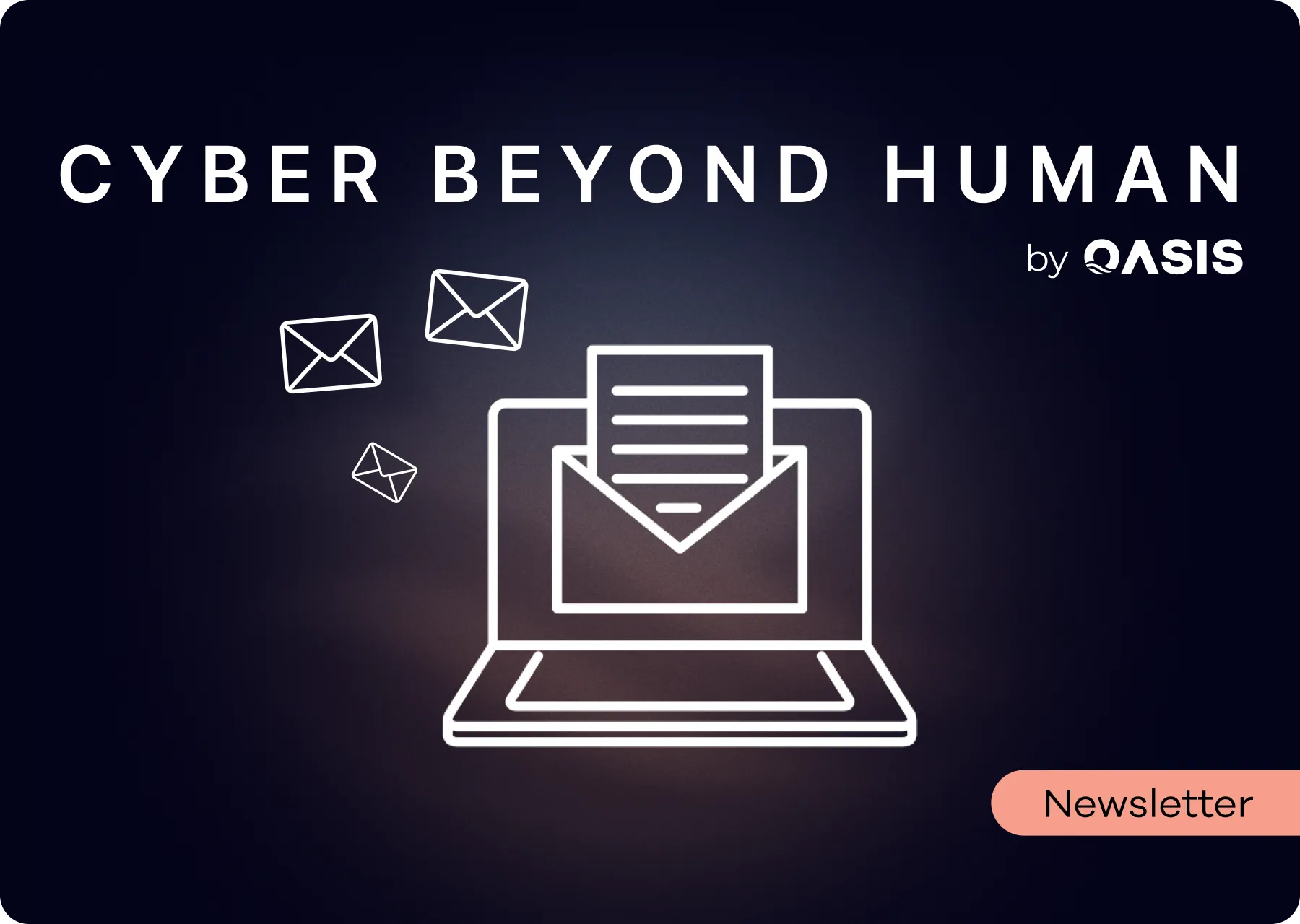What are Non Human Identities?

Non-Human Identities (NHIs) have become an essential component of modern IT environments. As enterprises adopt cloud-native architectures and automation grows, NHIs are proliferating rapidly. According to recent research from Enterprise Research Group, NHIs now outnumber human identities by over 20x in enterprise environments and continue to grow at a rapid pace exceeding 20% YoY.
Despite their importance, NHIs often remain unmanaged or poorly secured, creating gaps that attackers can exploit. Understanding what these identities are, the roles they serve, and how to secure them is critical for any organization managing hybrid or multi-cloud services infrastructures.
In this article, we will define NHIs, examine their types, explore the challenges they pose, and outline best practices for managing non human identities and improving security measures.
What are Non Human Identities?
A Non Human Identity (NHI) is a digital construct used for machine-to-machine access and authentication across on-prem, cloud and edge environments.
Unlike human identities, which are tied to individual users and typically secured through multi-factor authentication (MFA), Single Sign-on (SSO), and behavioral oversight, NHIs operate autonomously (often at scale), created programmatically, often by developers or IT systems, and rely on credentials such as API keys, service accounts, certificates, OAuth tokens, or SSH keys. This distinction makes securing NHIs a unique challenge, requiring different approaches than those used for human identity security.

Examples of Non-Human Identities
Examples of NHIs include Service Accounts, System Accounts, Application Accounts, and Machine Identities. Authentication methods for NHIs vary, incorporating secret information and federation mechanisms. Examples of authentication methods for NHIs encompass Secrets, Keys, Access keys, Certificates, and Tokens, each serving specific purposes in secure communication and authorization.
Special considerations arise in scenarios where identities are inseparable from the authentication string, as seen in Storage account access keys, Shared Access Signatures (SAS) tokens, and API keys for Software as a Service (SaaS) applications like Snowflake. In such instances, the authentication methods encapsulates permissions configuration, complicating identity and access management (IAM) and identity access governance (IGA). As organizations continue to automate business processes with AI, the growth of Non-Human Identities is expected to accelerate, underscoring their critical role in the evolving landscape of enterprise systems.

Service Accounts:
Service accounts are used by applications to interact with other systems or services. For example, a web application might use a service account to access a database or connect to a payment gateway.
API Keys:
API keys enable machine-to-machine authentication, often used by IoT devices or for integrating applications with external APIs. They serve as credentials that grant access to specific services or functionalities.
Machine Identities in Cloud Workloads:
Machine identities represent entities like virtual machines (VMs), containers, or serverless compute services. These identities allow cloud workloads to authenticate and communicate securely within an environment. Machine identities have grown from 50,000 per enterprise in 2021 to 250,000 in 2025, representing a 400% increase—further highlighting their critical role in modern infrastructures.
Tokens and Certificates:
Tokens and certificates are critical for securing authentication and encryption between applications. Short-lived tokens, such as OAuth tokens, are often preferred due to their temporary nature, which reduces the risk of misuse. Certificates, like TLS certificates, ensure secure communication between systems.
Human Identities vs. Non-human Identities
NHIs differ significantly from human identities in key aspects:
- Decentralization: NHIs are not centrally managed like human identities; instead, they are created and managed across multiple platforms by various stakeholders. It can be a real challenge to classify if a user is a human or a machine.
- Ownership: Unlike human identities, NHIs are not tied to specific individuals, evading regulatory requirements and often used by multiple administrators or applications.
- Scale: the large volume of NHIs (10x-50x more than human) creates a massive attack surface that is growing exponentially
- Rate of change: NHIs are subject to frequent creation and deprecation, aligning with the rapid pace of code evolution, rendering them more challenging to govern. However, it's worth noting that NHIs can also persist unchanged for years without rotation or imposed consumer limitations.
- Developer driven: unlike with Human Identities, the creation and control of NHIs aren’t centralized to IT or Identity Team. In many cases, NHIs are directly created by developers or even citizen developers in no-code low-code who may not be aware of their usage, as they represent the only means for the code they need to interact with systems
- Secret expiration: while frequent password rotation is very common around privileged users, many of the NHI are set to live for a very long time, and sometimes even without an expiration date.
- Operational Risk: Engaging with NHIs carries inherent operational risks. In the absence of a comprehensive understanding of all consumers, there is a potential for disrupting production systems. Moreover, efforts to rotate secrets may unintentionally disrupt established and vital business workflows.
- Authentication Diversity: NHIs support multiple authentication methods, reflecting technological evolution. Various systems may employ different authentication methods, leading to a wide range of approaches in use. The basic concept of Human Identity security relies on the fact that you can use these three factors to secure the authentication: 1) something you know (for example, password) 2) something you are (for example, face recognition) 3) something you have (for example, mobile phone) and then do multi-factor authentication. With NHIs the only protection is the secret that the user (in most cases a developer) gave to the machine - there is no SSO or MFA in the middle. This means that if attackers get hold of a Service Account and the secret there isn’t anything else that can stop them. In the cloud era, where APIs are the gatekeepers of access, identity becomes the new perimeter; especially when sensitive information in handled by machines.

How do you Manage Non Human Identities?
Due to their characteristics and the nature of their lifecycle, NHIs pose several new operational challenges:
- How to discover and inventory all NHIs across cloud services and provideer
- How to identify and prioritize violations and security risks
- How to gain critical context metadata information, such as usage, dependencies, owners, consumers and resources accessed, to be able to remediate vulnerabilities without breaking things
- How to take control and automate of the lifecycle of new and legacy NHIs
Despite the risks, non-human identities are often blind spot for most enterprises because they lack the right tool for the job. Existing security tools in the stack, such as CSPMs, PAMs, Secret Managers, IAMs, were not designed to address the unique lifecycle management and security requirements of NHIs and, as result, fall short of the goal, leaving organizations vulnerable.
Given the unique operational challenges posed by NHIs, there is a pressing need for specialized Non-Human Identity Management solutions. These solutions should address key requirements, including discovery and inventory management, risk assessment, lifecycle automation, and developer readiness.
Oasis platform for Non-Human Identity Management is now available to close this gap. Oasis takes an NHI-first approach with purpose-built capabilities for discovery, inventory, posture assessment, lifecycle automation, and developer readiness.
Our mission is to empower enterprises to reduce the risks associated with unmanaged NHIs, maintain compliance, and simplify identity governance. Request a Demo to explore how Oasis Security can transform your approach to Non-Human Identity management.
We do newsletters, too
Discover tips, technical guides and best practices in our biweekly newsletter.










